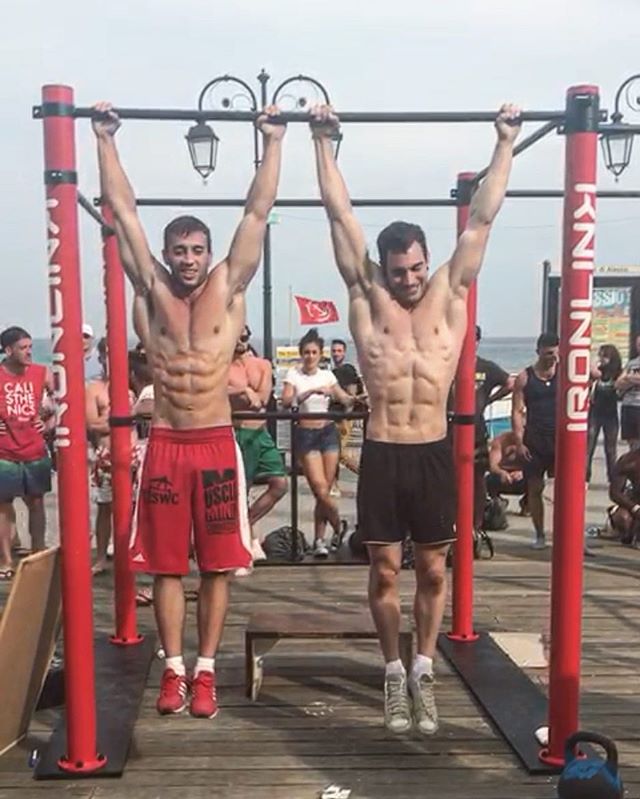Six-pack abdominal’s. The pinnacle of an incredible physique. You’re lean, you’re sexy, you’re everything you ever wanted to be…
…you’re looking at a magazine. Or watching a Marvel superhero movie.
Odds are, you have spent years on a quest to achieve the impossible:
Get shredded abs. And, of course, you are scouring the Internet for those perfect ab exercises to give you the perfect abs fast.
Well, it’s time to stop looking around.
This is the last article you’ll ever need to read about ab workouts.
Can I get an amen?
In this comprehensive guide, we’ll go over what having a strong core will do for you, how your abs are structured, how often you should train them, and lists of exercises and workouts you can use depending on your level of fitness or main goal.
For the secret to getting that six sick pack, read on…
Also Read: Top 6 Best Outdoor Pull-up Bars and related accessories
First Things First…
As with any body part definition guide, 75-80% of the work is done in the kitchen.
That’s right: Your nutrition needs to be on point for getting a solid, good-looking midsection.
Whichever diet or nutrition protocol you choose – be it the ketogenic diet, the paleo diet, or intermittent fasting – make sure you stick to it and maintain a slight caloric deficit to promote fat loss.
When it comes to a healthy, lean body, the food and drink you consume is #1 priority. The gym can only take you so far.
Also Read: Calisthenics for Women
Why is Ab Training Important?

This might go without saying, but still: Having a strong core is pivotal to having an impressive body overall.
Direct abdominal training can have a profound effect on your entire training regimen, as well as many other benefits.
It’s true that you don’t have to work your abs specifically, but without adding in some form of ab exercises your core could become the weak link. (Which is the last thing you want.)
Benefits of Having A Strong Core

There are many reasons why having a stronger core is in your best interest:
- You’ll avoid injury: When you work on strengthening your core, you should also be gaining stability. With core stability, your whole body becomes stronger and less prone to injury.
- Your CNS and other organs will be protected: Health isn’t simply muscle deep. Inner organs are affected by how strong your core is. Your core is where your vital organs, the majority of your central nervous system, and your biggest arteries and veins reside. Keep it locked in and you won’t have an issue with day-to-day movements.
Also Read: The Benefits of Calisthenics: 8 Reasons To Do Bodyweight Workouts
- Your back becomes stronger: Speaking of the central nervous system, your spine is directly attached to the muscles in your core. And, seeing as it’s all one giant system, a weak core equals a weak lower spine. As a society that sits for most of the day, our spines are compressing, causing back pain. Getting your core on-par with your overly strong back muscles is a good start to rectifying that pain.
- You will have better posture: As a wonderful side effect to balancing your back muscles with your core, you will have a more natural, tall, upright posture. This exudes confidence, which can be beneficial in other areas of life.
- You’ll boost your breathing: At the top of your core lays your diaphragm. This crucial piece of your body’s puzzle controls deep breathing. Same as the spine, your core determines how strong your diaphragm can be. Breathing from the diaphragm also reduces stress, making relaxed breathing the perfect post-workout exercise.
- Your balance will improve: Did you know that your center of gravity actually lies in your pelvis? Of course, your core supports the alignment of said pelvis, which means a strong core results in increased balance.
- Heart health will increase: Even though most fat lies directly beneath the skin, there is also visceral fat that lines the organs. This type of fat is dangerous and can lead to heart disease and other problems. Working out your core can aid in lowering your amount of visceral fat.
- Your digestion will clear up: Not only will your core get stronger with these workouts, they will also become more flexible. Without a flexible core, your organs can become too compressed, leading to poor digestion. If your core is stable and flexible, however, the spine will flush out all of the surrounding systems, including optimizing your metabolism.
Read Also: Calisthenics For Beginners (9 Key Workouts And More)
- You’ll feel better overall: Not only will you be the envied one at the beach, you will feel better too. With an engaged, strong, flexible, stable core, your entire body feels amazing, allowing you to think positively about yourself and others. This may be the most vital benefit.
As you can see, having a strong core is incredibly important to your health, as well as your full physique.
The Muscles Of The Core
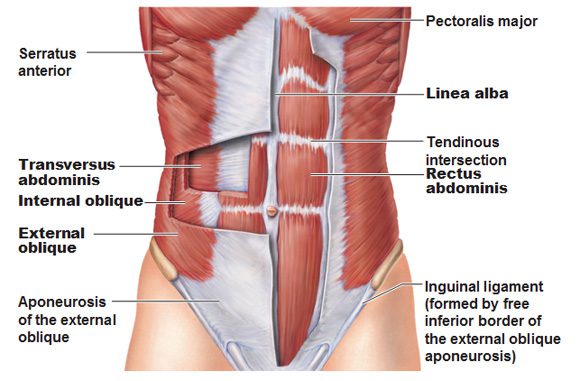
Alright, let’s get into the nitty-gritty.
When it comes to training your core, you can’t just do two or three exercises and assume you’re hitting all of the necessary areas.
Your abdomen is a highly articulate machine with multiple layers. There are:
- The rectus abdominis: The outer abdomen normally known as “the six pack”
- The transverse abdominis: Where your stability stems from, this is the part of your abs that allows you to suck your belly button towards your spine.
- The internal oblique: Helps with trunk rotation (a.k.a. twisting left and right).
- The external oblique: Also aids in trunk rotation, but are also the outer lines you see beneath your ribs on your sides when really lean. This is where you see lines down your V-taper, one of the most important factors in a solid, kickass physique.
- Serratus anterior: The striations you see over your ribs on the outside, below your arms.
- The lower back (lower LATs, Erector spinae, and multifidus): Stability and balance are the main functions of your lower back, a combination of muscle, tendons, and spine. The top three muscles are listed above.
Also, in the external oblique there is what’s called aponeurosis, a “sheetlike tendinous expansion” which connects said external obliques to the trunk and to each other.
You work this out along with the external oblique, but it bears mentioning to show how the abdominals work.
Also Read: How To Develop Tree Trunk Legs With This Calisthenics Leg Workout
How Often Should You Train Abs
Ab Training Video
Your abs are just like all the other muscles in your body: They need to be worked and they need ample rest to recover and bounce back stronger.
However, seeing as they are smaller muscles in terms of size, they can recover quickly and be targeted again within a few days.
To avoid overtaxing your abdomen, it’s recommended not to do ab exercises on a daily basis.
Instead, go with two or three days a week.
Working out your abs this often will ensure a stronger core without keeping your abs in an overworked state.
Of course, make sure you don’t focus on only one part of your abs (i.e. crunches for your rectus abdominus); train all of your ab areas.
Also Read: 5 Calisthenics Gloves That Will Help You Grip And Grow
Ab Exercises
Here, we’ve compiled a list of all the calisthenic ab exercises you could ever want. They are separated based on which abdomen muscle it affects the most.
Rectus Abdominis:

- Sit-ups/crunches/any version of these movements (best variation is the core boat crunch with a dumbbell between your feet or the myotatic crunch)
- Stability ball knee tucks (or TRX band knee tucks)
- Leg/knee raises
As you can see, the main three are the same movement; one is where you’re facing the ceiling, one is where you’re facing the floor, and the last is facing forward.
But it’s all simply flexing your rectus abdominis, which is quite literally a “crunch.”
All other exercises actually focus on other parts of your core.
Transverse Abdominis:

- Abdominal hollowing (static or repping)
- Plank
- Glute bridges
- Quadruped lifts (a.k.a. Bird dogs)
- Russian twist (also helps the obliques)
- Supine leg extension
- Cat vomits (hold for as long as possible)
If you notice, most of the TVA exercises are ones that you hold for a period of time.
The plank, abdominal hollowing, and glute bridges are meant to be static while keeping your core tight.
“Keeping your core tight” is all about your transverse abdominis.
The quadruped lift and supine leg extension are opposite-facing versions of the same movement: Opposite hand and leg lifts.
External Obliques:
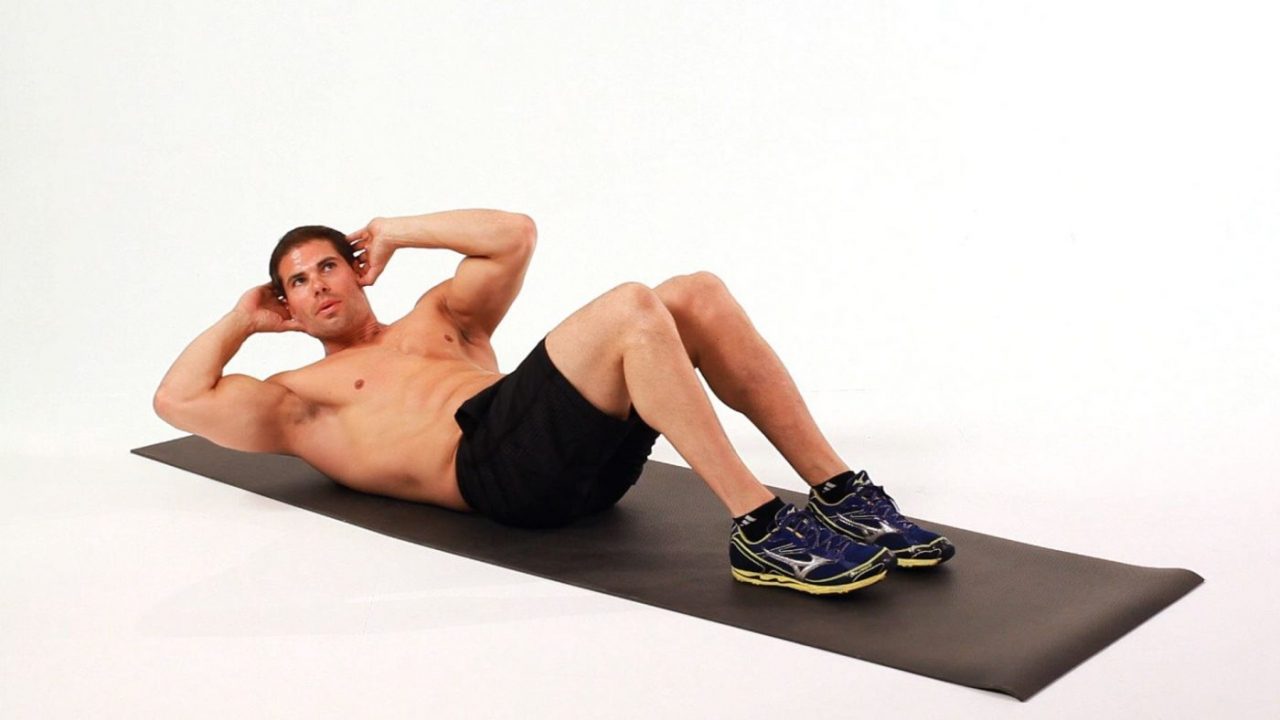
- Side bends (with any form of weight)
- Side crunches, like toe touches or knees-on-floor crunches
- Russian twists
- Bicycle crunches
Any and all traditional oblique exercises mainly target the external obliques.
Internal Obliques:
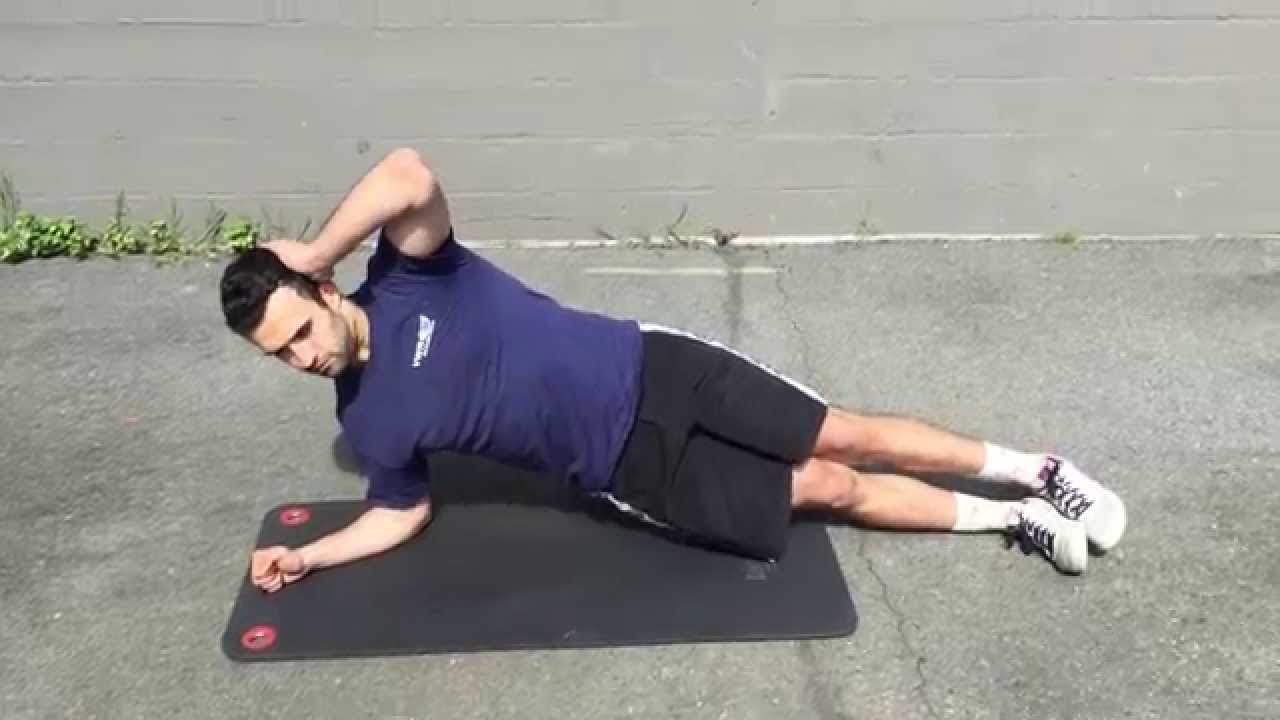
These are those oblique exercises that hurt tremendously, and with good reason.
It’s not only getting your external obliques, but the often forgotten internal obliques, making it a full-on assault on your outer abdominals.
Serratus Anterior:
While not necessarily part of your “core,” some people mistake the serratus as part of your abs. They really aren’t, but it’s worth having a strong serratus as well.
These exercises are simple and not super taxing. Do them when you feel like it.
Lower Back:
Essentially the opposite of a crunch, lower back exercises are to ensure balance between your anterior and posterior muscles.
All of the above are variations of the same movement: Straightening up or going past that point. And can be performed on a roman chair.
Ab Workouts
Below are four different workouts based on your scenario or goals.
The at-home one is without any equipment whatsoever (that’s right, you have zero excuses).
The beginners one is the basis of the progression one, which lists the progression from beginner to advanced. Of course, the oblique workout works out – *gasp* – your obliques.
As for reps, sets, rest time, and frequency, all are optimized to give you the best hypertrophy (muscle growth).
The main goal of an ab workout isn’t to lose weight or improve cardio; it’s to improve the strength of your core, which also means stability and flexibility.
The only way to get super lean is through nutrition.
Calisthenics Abs Workout At Home

- Core boat crunch: 3×8-18 (rest 90 seconds between each set)
- Abdominal hollowing + Plank Superset: 3×60 seconds each (do a minute of hollowing, followed immediately by a minute of planking; rest 90 seconds between each superset)
- Toe touches: 2×50 (25 each side; rest 90 seconds between each set)
- Lying twists: 2×40 (20 each side; rest 90 seconds between each set)
- Shoulder blade protractions: 1×50
- Supermans: 2×20 (rest 60 seconds between each set)
Frequency: Twice per week, separated by at least two days (example: Monday/Thursday).
Notes: This workout doesn’t require any equipment.
All use simply the floor, except for shoulder blade protractions, which use a wall.
The total time for this workout should take you about 27 minutes.
Calisthenics Abs Routine For Beginners
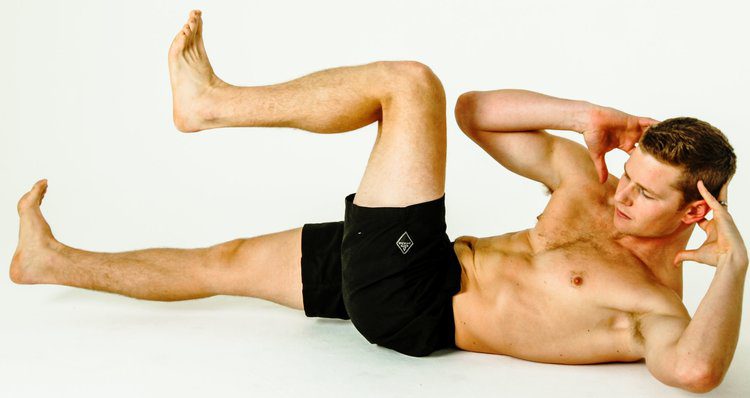
- Sit-ups: 3×8-18 (rest 90 seconds between each set)
- Glute bridges: 3×8-18 (rest 90 seconds between each set)
- Bicycle crunches + Russian twists Superset: 3×20-30 each (10-15 each side, no rest in between exercises, rest 90 seconds between each superset)
- Wall slides: 1 set, getting as close to the wall as possible
- Good mornings without weight: 2×20 (rest 60 seconds between sets)
Frequency: Three times per week, with the workout separated by a day at least (example: Monday/Wednesday/Friday)
Notes: Basically, choose an exercise from each list above that are separated by core part.
This ensures you get a good workout for your entire core.
This simple yet difficult workout should take only 20 minutes.
Calisthenics Abs Progression
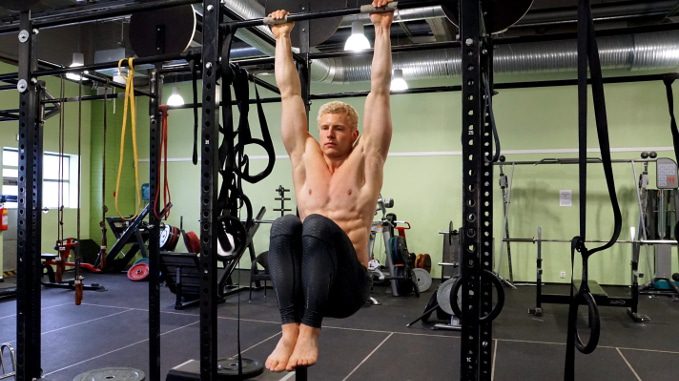
This is for when you get to the upper limit of reps for all exercises in the beginner workout.
Progress to the next variation (sit-ups → leg-elevated crunches → myotatic crunch) whenever you reach the upper limit.
Start the new progression variation at the bottom of the rep range and work your way up. Repeat when you get to the top again.
This is how you progress and get those amazing abdominal strength gains. Once you lean down – again, this is built in the kitchen – your hard work will show in the form of a beastly six pack.
- Rectus abdominis exercise: Crunches → Sit-ups → Core boat crunches → Knee tucks → Myotatic crunches → Myotatic crunches with weight → Knee raises → Leg raises → Hanging knee raises → Hanging leg raises → Toes-to-bar → Weighted leg raises
- Transverse abdominis exercise: Glute raises → Plank hold (up to 120 seconds) → Abdominal hollowing (up to 120 seconds) → Quadruped lifts or supine leg extensions → Cat vomits (really squeeze your TVA)
- External obliques exercise: Knees on floor crunches → Toe touches → Bicycle crunches → Russian twists → Side bends with weight
- Internal obliques exercise (can be used as a superset with “External obliques exercise”): Lying twists → Plank twists → Incline twist crunches → Saxon side bends → Windshield wipers
- Serratus anterior exercise: Wall slides → Shoulder blade protractions → Scapular push-ups (these you don’t have to progress too hard on; focus on going slow and strengthening your serratus and scapular stability by squeezing your lower pecs)
- Lower back exercise: Bodyweight good mornings → Supermans → Weighted good mornings → Hyperextensions → Weighted hyperextensions
Some of these end with weight, so you can continue to up the weight (if you can) when you need to keep progressing.
For the TVA, try and hold the cat vomits for longer each session. For the internal obliques, windshield wipers will be tough enough as it is, but if you want, go for that alluring human flag!
Also, quick side note: When you start to plateau on every exercise, go down to twice a week. Your body may need more rest.
Go for a Monday/Thursday split.
If you get to the end of these progressions and you’re just adding weight, your core will be strong as hell! Lower your body fat percentage and you’re golden for getting that visible six pack!
Calisthenics Oblique Workout
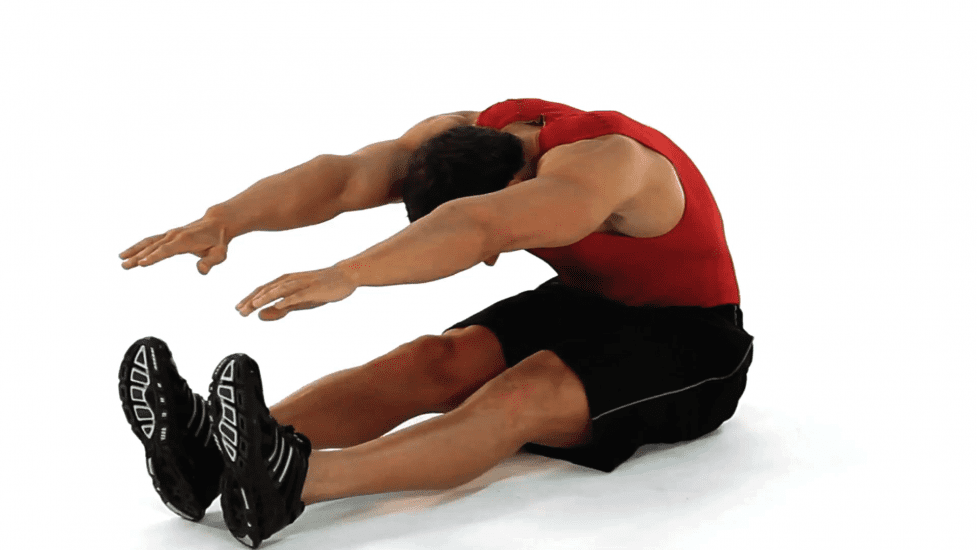
For those who want to specifically target your outer abdominals, this is a quick workout you can do after your normal workout to supplement oblique work.
- Side bends: 3×20-30 (10-15 each side; rest 90 seconds between each set)
- Toe touches + Russian twists Superset: 3×20 each (10 reps each side, rest 90 seconds between each set)
- Saxon side bends: 3×8-15 (rest 90 seconds between each set)
- Windshield wipers: 2x failure (rest 60 seconds between sets)
Frequency: Obliques don’t require too much work to get strong (or, as strong as obliques can get). Therefore, you can get away with once, maybe twice, per week. Add it to another workout.
The workout will take about 21 minutes.
Conclusion
Your core is crucial for your overall wellbeing.
To have the best abdomen muscles possible, make sure you follow a fantastic nutrition protocol, train all areas of your core, and give yourself ample rest and recovery.
The benefits of a strong and stable core are obvious. All of the above workouts will give you exactly that. Choose your weapon – er, workout – and wield powerful abs!

